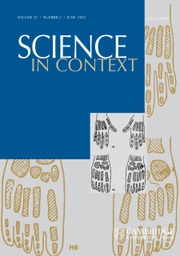No CrossRef data available.
Article contents
Time thrift and economic science in the eighteenth century
Published online by Cambridge University Press: 02 September 2025
Argument
In the last decades, the notion of “economy” has gained a central importance in accounts of early modern experimental culture. Historians of economic science have primarily focused on the repurposing and recycling of materials, namely on thrift as a virtue of the skilled experimenter. In this paper, I propose to consider economy as a quality enacted by technology. As a matter of fact, technology could actualize the principles of economy in its performance, and its “degree of economy” could be measured. I argue that one of the key parameters used to quantify economy was the temporal performance of technology. To ground my view of “time thrift,” I analyze unpublished documents relating to eighteenth-century inventions based on the action of fire (cooking, lighting), scientific reports written by scientists on such inventions, as well as expert assessments on manufacturing activities also connected with the management of heat (distillation).
Information
- Type
- Research Article
- Information
- Copyright
- © The Author(s), 2025. Published by Cambridge University Press


